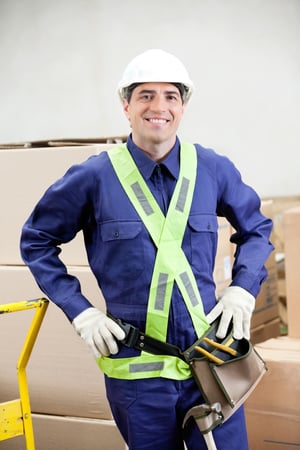 Hard hats, safety goggles, reflective vests, gloves, and steel toe boots vary in size and shape, but their mission is all the same – protecting your head to your toes.
Hard hats, safety goggles, reflective vests, gloves, and steel toe boots vary in size and shape, but their mission is all the same – protecting your head to your toes.
Personal protective equipment, commonly referred to as “PPE”, is equipment worn to minimize exposure to hazards that cause serious workplace injuries and illnesses.
Does your workplace require you to wear any PPE? If so, does your PPE fit properly and was training provided on the “When,” “What,” and “How?” If not, then protecting your head to your toes and ensuring your safety is likely to become an impossible feat. The workplace is filled with objects that can fall. It is filled with particles that can fly. It is filled with devices that can cut. Let us work together as safety superheroes to foil the plot set on destroying our power.
Before we suit up – the first step is a hazard assessment.
Hazard Assessment
A PPE hazard assessment can help you in determining which particular personal protective equipment is needed per activity type for your team.
The employer shall assess the workplace to determine if hazards are present, or are likely to be present, which necessitate the use of personal protective equipment (PPE).
Documenting a certification form is ideal. It will include the work area(s) and job task(s). It will include work activities, work-related exposures and PPE requirements. It will also serve as a written certification that you have completed a hazard assessment as required by OSHA.
Using personal protective equipment is often essential, but it is generally the last line of defense after engineering controls, work practices and administrative controls.
The hierarchy of hazard controls is often illustrated as an inverted triangle with “elimination” (or physically removing the hazard) at the top and “PPE” (or protecting the worker from the hazard) at the bottom. An effective PPE hazard assessment will include hierarchy consideration to provide the best effort to minimize or eliminate exposure to hazards in the workplace.
When the hazard cannot be eliminated without the use of PPE – the next step is PPE consideration.
PPE Consideration
Protection from: 1) head injuries, 2) foot and leg injuries, 3) eye and face injuries, 4) hearing loss, 5) hand injuries, 6) body injury and 7) adverse health effects caused by breathing contaminated air is your responsibility. Responsibilities cost money, but you will not turn into a “nillionaire” when it comes to PPE. Yes, you are required to pay for PPE used to comply with OSHA standards, but seriously folks, how can we put a price on the safety and health of our team?
The employer shall: select, and have each affected employee use, the types of PPE that will protect the affected employee, communicate selection decisions to each affected employee and select PPE that properly fits each affected employee.
Check out Handout #7 for more tips!
Training is also required! After you have chosen which PPE, your team will need to know at least: 1) When and what PPE is necessary, 2) How to properly don, doff, adjust and wear PPE, 3) PPE limitations and 4) PPE maintenance. Notice how your team commits to the idea when you lead the way. “The purpose of training is to tighten up the slack, toughen the body, and polish the spirit.”
Hazard assessments, PPE consideration and training may all be a bit defeating for you. We get it and we can help. “Having someone help you doesn’t mean you failed – it just means you’re not alone.”
Call-to-Action
Protecting your head to your toes requires time the most. The time spent on the hazard assessment, PPE consideration and training could cost you more in the end. Why not let professionals see that you do not fall down the rabbit hole? Consider outsourcing someone to help you through the hazard assessment process and can provide continuous training. An effective PPE program, with the right help, will put you on the right track to a more powerful company. “No safety, know pain – know safety, no pain.” For assistance with any part of the PPE Hazard Assessment process, contact SafetyPro at (800) 941-0714.
Source: OSHA

















